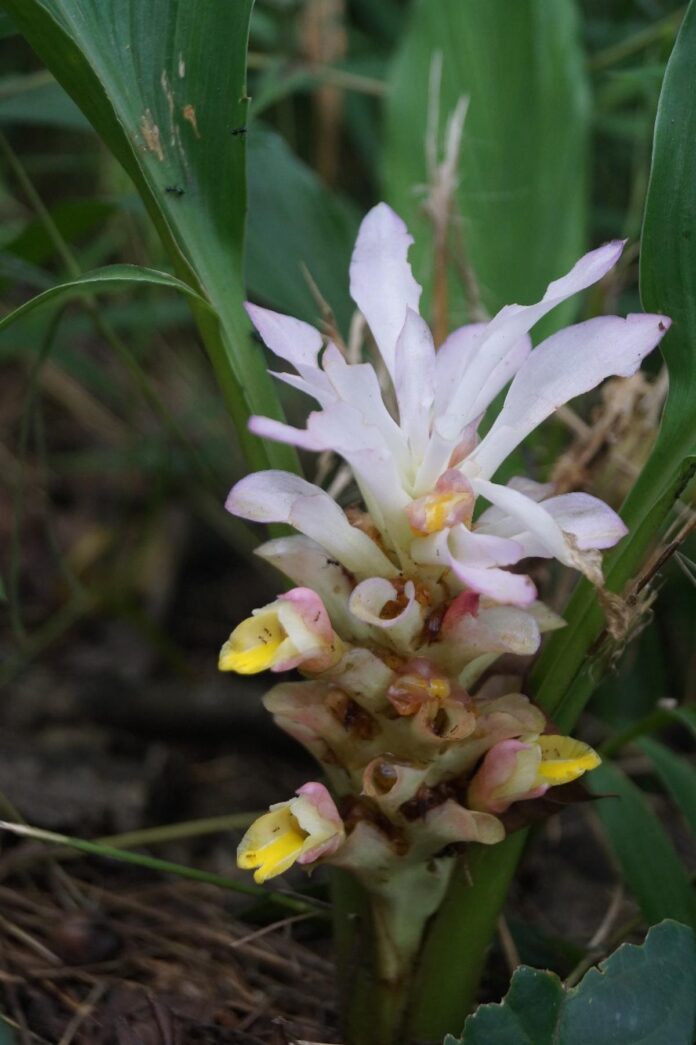Nagaland, a region known for its rich biodiversity and unique flora, has recently made headlines with the discovery of a new species of the genus Curcuma. This major botanical find not only adds to the scientific understanding of the Curcuma genus but also underscores the ecological importance of the region.
Discovery of the New Curcuma Species
The newly identified species, part of the genus Curcuma, was discovered in the verdant landscapes of Nagaland. This genus, renowned for its species like turmeric (Curcuma longa) and cardamom (Curcuma aromaticus), is characterized by its aromatic rhizomes and vibrant flowers. The newly discovered species adds to the already diverse array of plants within this genus.
Key Characteristics
- Botanical Features: The new species exhibits distinctive botanical features that set it apart from other members of the Curcuma genus. These include unique leaf shapes, flower structures, and rhizome characteristics, contributing to its classification as a new species.
- Habitat: The plant was discovered in a specific habitat within Nagaland, characterized by its rich, tropical vegetation and favorable climatic conditions. This habitat is crucial for the plant’s growth and development.
- Scientific Classification: The new species has been scientifically classified based on its morphological traits and genetic analysis. This classification helps in understanding its place within the Curcuma genus and its evolutionary relationships with other species.
The discovery of a new Curcuma species in Nagaland holds several important implications:
- Biodiversity Enrichment: This find enriches the biodiversity of Nagaland, highlighting the region’s status as a hotspot for plant diversity. Each new discovery contributes to the broader understanding of plant species and their ecological roles.
- Botanical Research: The new species provides valuable data for botanical research. Scientists can study its unique characteristics, ecological interactions, and potential uses, contributing to the overall knowledge of the Curcuma genus.
- Conservation Efforts: Identifying new species underscores the importance of conservation efforts in preserving biodiversity. The discovery can help in formulating strategies to protect the plant’s natural habitat and ensure its survival.
Implications for the Scientific Community
The discovery of the new Curcuma species has several implications for the scientific community:
- Taxonomy and Classification: The new species adds to the taxonomy of the Curcuma genus, offering insights into its diversity and evolutionary history. This helps botanists refine classification systems and understand species relationships.
- Ecological Studies: The plant’s habitat and ecological interactions can provide information on the functioning of tropical ecosystems. This knowledge is crucial for understanding plant-environment relationships and ecosystem dynamics.
- Pharmaceutical Research: Given the Curcuma genus’s significance in traditional medicine, the new species may have potential pharmaceutical applications. Research into its chemical properties and medicinal uses could lead to new discoveries.
The discovery of the new Curcuma species highlights the need for continued exploration and conservation efforts in Nagaland and similar biodiverse regions:
- Exploration: Ongoing botanical exploration is essential for identifying and documenting new species. Continued research in Nagaland’s diverse habitats could reveal more undiscovered species.
- Conservation Strategies: Protecting the habitats where new species are found is crucial. Conservation strategies should focus on preserving natural ecosystems, combating deforestation, and promoting sustainable practices.
- Collaborative Efforts: Collaboration between scientists, conservationists, and local communities is key to successful conservation and research initiatives. Engaging local stakeholders can enhance efforts to protect and study biodiversity.
The discovery of the new Curcuma species has broader implications for Nagaland and the global scientific community:
- Regional Importance: Nagaland’s rich plant diversity highlights its importance as a region for botanical research and conservation. This discovery contributes to the growing recognition of Nagaland as a significant biodiversity hotspot.
- Global Botanical Research: Findings from Nagaland contribute to global botanical research by providing new data on plant diversity and evolution. This enhances the understanding of plant species worldwide and their ecological significance.
- Ecotourism Potential: The discovery of unique plant species can boost ecotourism by attracting researchers, botanists, and nature enthusiasts. Promoting ecotourism can provide economic benefits while supporting conservation efforts.
The discovery of a new species of the genus Curcuma in Nagaland is a remarkable achievement that highlights the region’s exceptional botanical diversity. This finding not only enriches the scientific understanding of the Curcuma genus but also underscores the importance of ongoing exploration and conservation efforts. As researchers continue to study and protect the rich flora of Nagaland, the potential for further discoveries and advancements in botanical science remains promising.




